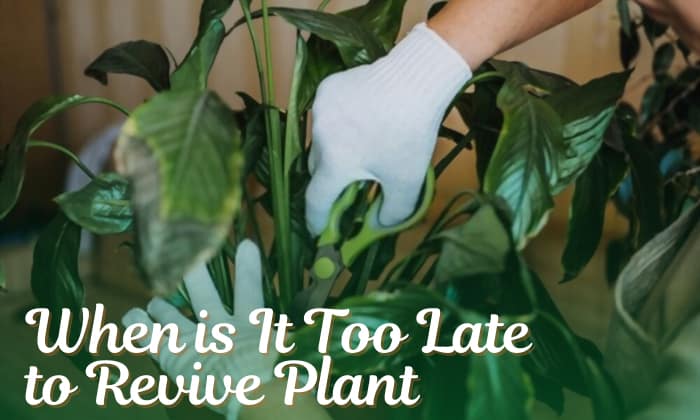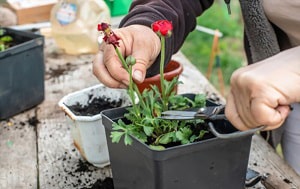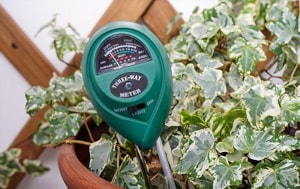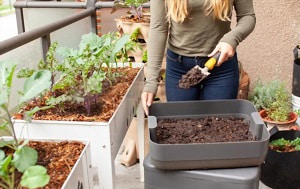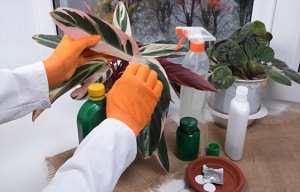When is it too late to revive a plant? It’s necessary to ask ourselves this question sometimes. Whether due to forgetfulness or lack of knowledge, we failed to give a plant proper care, and now it’s deteriorating.
One obvious sign of dead floras is mushy and fragile stems plus roots. Once a plant has reached this stage, no home remedies will save it. For more information on plant health and how to revive dying plants, read below.
Table of Contents
When is It Too Late to Revive Plants?
Above, we mentioned that the roots and stems indicate whether you can save a dying plant. In practice, if your plant doesn’t exhibit any of these following attributes, it’s beyond rescue:
- The plant’s stalk is still bendy. This means that it has not completely dried out yet.
- Somewhat sturdy roots with white tips
- Green tissue on the stem (either scratch the stem base or trim off ⅓ of an upper branch at a time and look for green parts)
- Note that you may not be able to assess the roots of a tree, as it’s much bigger than a houseplant. So, to decide if it’s too late to revive a tree, scrape the bark and see whether it’s green underneath. No green anywhere signifies a dead tree.
In reality, some people may pay more attention to unhealthy foliage, considering it’s more noticeable than other flora parts. However, gardeners should know that a seedling or tree with brown leaves isn’t always dead. Often, it has watering problems and other issues that are fixable.
Another possibility is that your plant may be going through winter dormancy, causing it to shed or drop leaves before growing in spring. During the cold season, plants that look dead but are not include daffodils, tulips, deciduous trees, evergreens like azaleas or camellias, and shrubs like rosemary and lavender.
With those facts out of the way, if there’s life on the roots or stems, follow these tips to revive a dying plant:
- Leave healthy roots intact and trim off dead stem sections, leaving at least two inches untouched.
- Alternatively, put only the living stems in the soil and discard the dead roots.
- In both situations, give the plant 50% of its sunlight requirement and keep the soil moist. Then wait for improvements.
How to Revive a Plant
Now that you know when can a seemingly dead plant be revived, here are some extra tips on restoring plant health.
1. Remove unhealthy stems and leaves.
The first step in reviving a dead plant is cutting off dead stems and leaves. Brown leaves will never revert to being healthy, so there’s no use in keeping them. Cutting off dead foliage will also improve your plant’s appearance and encourage new growth.
At the same time, sterilize your scissors before pruning. Doing so will prevent the spread of disease, especially if you’ve used the cutting tool on other sick plants. For a cheap solution, mix bleach and water in a 1:9 ratio or use 70% isopropyl alcohol to disinfect the scissors.
2. Adjust your watering and repot if necessary.
If you saw brown and droopy leaves, you may have a plant that dried out due to underwatering. In this case, soak the roots in water for 30 minutes to a few hours and adjust your irrigation afterward.
For example, if the plant needs an inch of water per week, give it that exact moisture amount. You may also buy a soil meter and use it to guide your watering habits. Just stick the device into the soil, check the reading, and irrigate if it says “dry.”
On the other hand, another scenario that may happen is overwatering. In this case, the foliage will also turn brown or yellow; the soil will be soggy; and there may be soft stems and roots with a weird odor.
In this case, revive a houseplant by repotting it. Though you may wait until the soil dries as well, changing the planting medium is better, especially if there are pests and bacteria in the current pot.
Read more: Tips to repot a snake plant.
3. Give plants the appropriate temperature, sunlight, and humidity.
A straightforward way to bring a dying plant back to life is to satisfy its growing requirements. Obviously, plants will suffer if the temperature, sunlight, or humidity is unsuitable.
Insufficient sunlight often causes foliage loss, while too much of it results in wilting and discoloration.
Similarly, excess humidity raises disease risks, while too little of it brings about deformed leaves.
As for excess heat or cold, both can damage plants, with the obvious results being heat stress or hampered growth and death.
With these facts in mind, it’s sensible to look up the care guide for your plant and follow it.
For instance, to revive a dying money tree, we should give it dappled light (at least six hours of it), a temperature of 53 to 77℉, and a humidity level of 30%. These conditions should prevent drought and brown or droopy leaves from becoming problems.
While implementing this tip, the lighting should be easy to take care of. As for the temperature and humidity, HVACs, shade curtains, and humidifiers will come in handy.
4. Apply fertilizer.
Aside from the abovementioned problems, nutrient deficiency can be the culprit behind a lifeless plant.
Hence, you should conduct a soil test and follow its recommendations, including amendments to use and their quantities. If you don’t know where to find them, soil assessment kits are available online and at universities’ extension offices.
It’s also important to note that fertilizing is the last step to take, especially if your plant has other problems like dead stems, overwatering, etc. Resolve these issues before applying nutritional supplements, as a plant in shock won’t adapt to many changes at once.
5. Manage diseases and pests.
Just as critical as the steps above is checking the plant for diseases and pests and eliminating them. Depending on the plant’s problem, management strategies will differ, so consult a horticulture professional for an accurate diagnosis.
For example, Bordo copper spray will work on powdery mildew and blight, while garden sulfur treats Black knot and Apple scab.
FAQs
Should I cut dead leaves off my plant?
Yes. Like we said above, removing dead leaves can boost plant vitality. Gardeners should in fact cut them as they cut weak stems.
For those unsure when to trim plants, spring and winter are excellent periods, especially for a dormant plant that looks dead but isn’t.
How long does it take to bring a dead plant back to life?
Expect to wait a month before results become apparent. So, have a little patience and give your plant proper care throughout this period.
Can I use sugar water for dying plants?
Yes, but only for cut flowers that are wilting. Store-bought sugar differs from the sugar plants make, so they will react negatively to it.
In fact, giving plants sugar can stop water absorption and increase harmful microorganisms, so this practice is very risky.
Cut flowers are an exception because they will accept artificial sugar, but even for them, use 1 teaspoon of sweetener per 1 quart of water only.
How to save a bamboo plant from dying?
Here are some pointers to help you revive a bamboo plant:
- Prune dead leaves and stems with sanitized scissors.
- Irrigate with chlorine-free, 6.0-pH water.
- Use clean water bowls with no fertilizer. Change them at least every ten days.
- Give the bamboo six hours of direct sunshine every day.
- Remove harmful insects by spraying them with water or applying chemicals.
- Grow the plant under 68 to 85℉.
Conclusion
When is it too late to revive a plant? We hope the answer is evident by now. If your plant is salvageable, follow the tips above to bring it back to life.
Otherwise, it’s better to compost the dead tissues and move on. Even the best gardeners lose a crop sometimes, so you shouldn’t feel bad about going through the same thing.

Hi, I am William – Floridayards’ digital content creator. My job is to find answers to all your concerns with thorough research and our team’s expert advice. I will also bring you honest reviews on the best products and equipment for raising your beautiful garden. Please look forward to our work!


